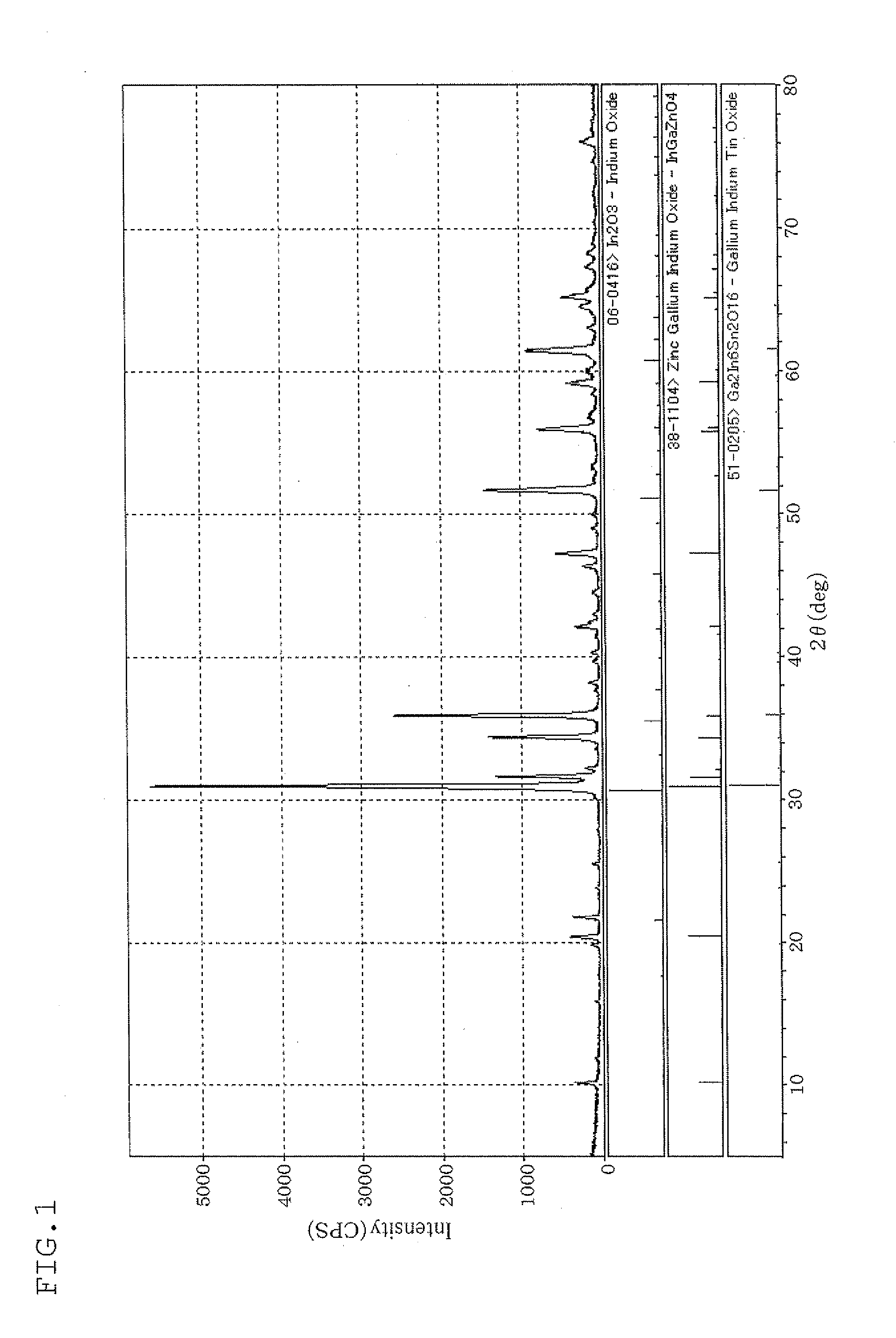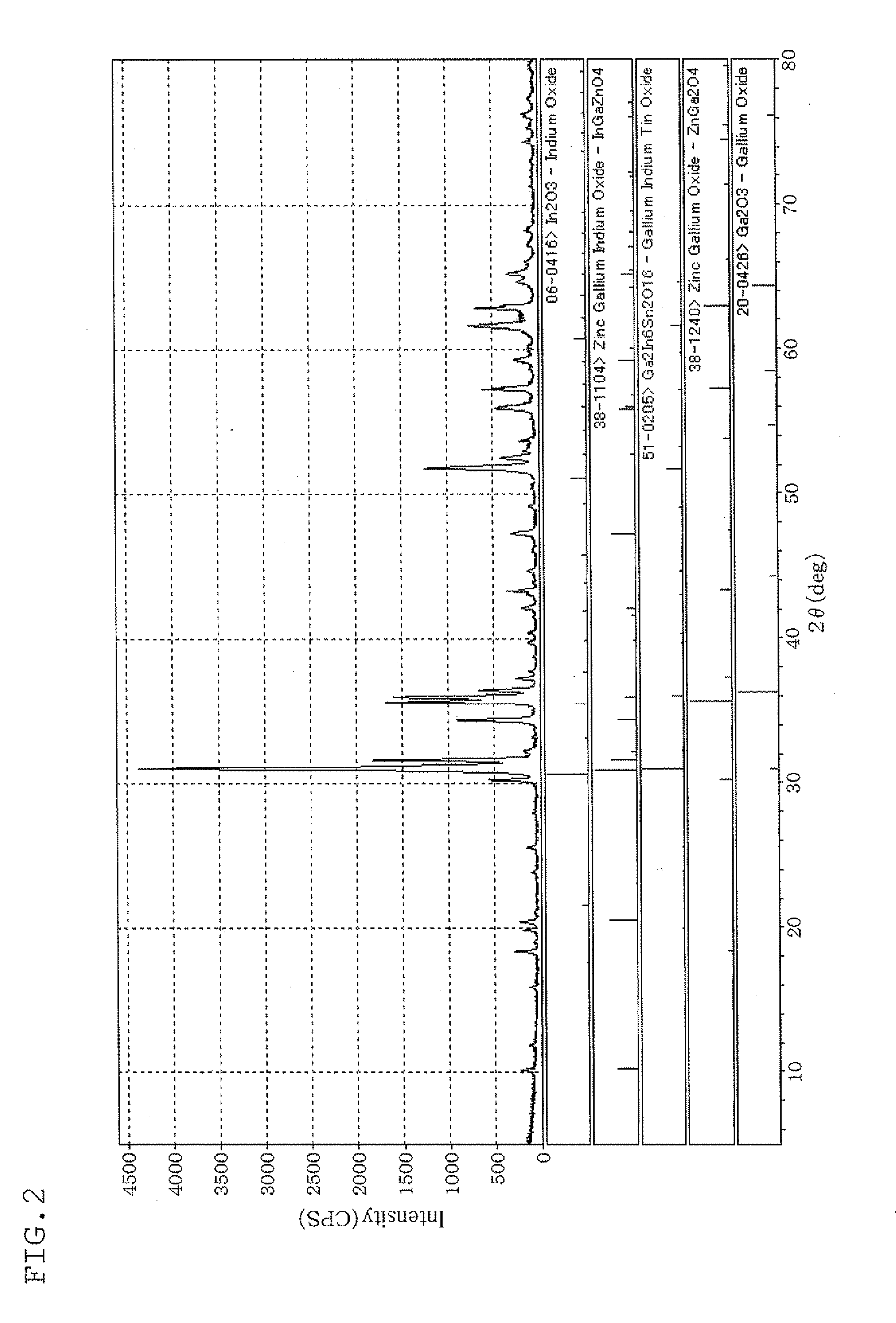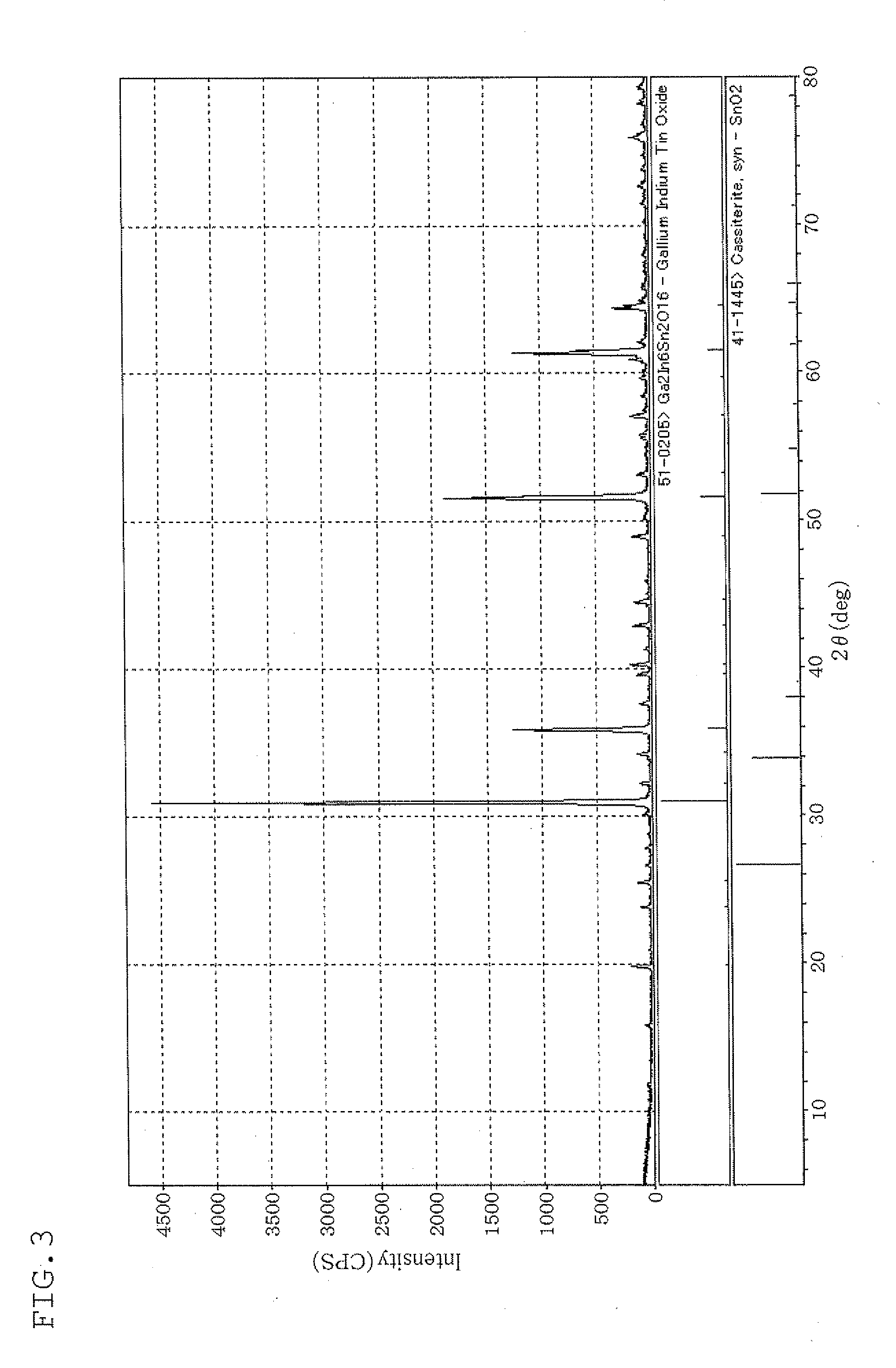In-ga-zn-sn type oxide sinter and target for physical film deposition
a technology of sintering body and target, which is applied in the direction of conductive materials, non-conductive materials with dispersed conductive materials, diaphragms, etc., can solve the problems of low productivity and high cost, and it is impossible to obtain a target with a sufficiently low resistance, etc., to achieve stable discharge, increase the area, and facilitate production
- Summary
- Abstract
- Description
- Claims
- Application Information
AI Technical Summary
Benefits of technology
Problems solved by technology
Method used
Image
Examples
example 1
(1) Oxide Sintered Body
[0090]As the raw material powder, indium oxide powder with a specific surface area of 6 m2 / g, gallium oxide powder with a specific surface area of 6 m2 / g, zinc oxide powder with a specific surface area of 3 m2 / g and tin oxide powder with a specific surface area of 6 m2 / g were weighed such that the weight ratio became 51:15:17:17 (atomic ratio of metal atoms: 0.43:0.19:0.25:0.13), and the resulting mixture was mixed and pulverized by means of a wet stirred medium mill. Zirconia beads with a diameter of 1 mm were used as the medium.
[0091]As compared with the specific surface area of the raw material powder mixture, the specific surface area of the powder was increased by 2 m2 / g after pulverization. Then, the powder was dried by means of a spray dryer.
[0092]This powder mixture was filled in a mold and then subjected to pressure molding by means of a cold pressing machine. Further, while circulating oxygen, the powder was sintered in an oxygen atmosphere at a high...
example 2
[0117]An oxide sintered body was obtained in the same manner as in Example 1, except that the indium oxide powder, gallium oxide powder, zinc oxide powder and tin oxide powder were mixed at 42:30:14:14 in weight ratio.
[0118]This sintered body was analyzed by X-ray diffraction. FIG. 2 is an X-ray diffraction chart of the sintered body. From this chart, it could be confirmed that this sintered body contained as a main component a compound shown by Ga2In6Sn2O16 and also contained compounds shown by In2O3, Ga2O3 or the like.
[0119]The bulk resistance of this sintered body was 4 mΩcm.
[0120]The resulting sintered body was processed into a target in the same manner as in Example 1, and an oxide semiconductor film was formed by using an RF magnetron sputtering film forming apparatus. The film forming conditions were the same as those in Example 1, and an oxide semiconductor film with a thickness of about 100 nm was formed on a glass substrate. In this example, almost no abnormal discharge wa...
PUM
| Property | Measurement | Unit |
|---|---|---|
| conductivity | aaaaa | aaaaa |
| particle size | aaaaa | aaaaa |
| resistance | aaaaa | aaaaa |
Abstract
Description
Claims
Application Information
 Login to View More
Login to View More - R&D
- Intellectual Property
- Life Sciences
- Materials
- Tech Scout
- Unparalleled Data Quality
- Higher Quality Content
- 60% Fewer Hallucinations
Browse by: Latest US Patents, China's latest patents, Technical Efficacy Thesaurus, Application Domain, Technology Topic, Popular Technical Reports.
© 2025 PatSnap. All rights reserved.Legal|Privacy policy|Modern Slavery Act Transparency Statement|Sitemap|About US| Contact US: help@patsnap.com



